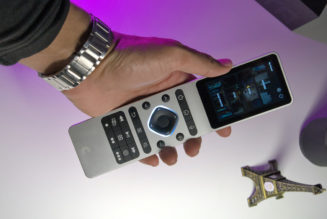I’ve had a love-hate relationship with Google Stadia, but I’m certainly going to miss it now it’s shutting down. While the writing has been on the wall for Stadia pretty much since it launched, I was one of the many (or the few as the joke goes) to be intrigued by this cloud-powered future of gaming. I paid the entry fee for a (mostly) empty stadium, but I enjoyed it anyway.
It hasn’t been easy to like Stadia. The first few months of the service felt like a beta I was paying Google to test. I couldn’t initially connect the Stadia controller wirelessly to a PC or phone; the browser streaming wasn’t as high quality as the Chromecast output; and Google Assistant integration was useless.
Google had also promised neat YouTube integration and the ability to share game clips with friends and have them instantly jump in to play with you, but these features were nowhere to be seen at launch and barely exist today. It was a rough start for the future of gaming, but as the years rolled on I’ve weirdly started to rely on Stadia.
%2Fcdn.vox-cdn.com%2Fuploads%2Fchorus_asset%2Ffile%2F24067467%2Fstadia.jpg&w=2400&q=75)
I’ve mainly used Stadia to play Destiny 2. When cheating was at its peak on the PC version, Stadia felt like an oasis away from wallhacks and aimbots. It has also been key to allowing me to play Bungie’s looter shooter on my Steam Deck in recent months. Destiny 2 doesn’t run on the Steam Deck at all, so I’ve used the free version of Stadia to fill that gap.
I’ve also used Stadia to play games like Cyberpunk 2077 on laptops and phones that would never be able to power such a title. The incredible ease of use of Stadia means you just navigate to the Stadia website, hit a button, and you’re playing a game a few seconds later. Google really nailed the technology and simplicity of the experience here, and competitors like Nvidia’s GeForce Now are still a little clunky in comparison.
Stadia was one of the easiest cloud solutions
While Google wasn’t the first to put AAA games in your browser, it was the first to really make it work well — and at a scale we haven’t seen before. Google’s technology has helped prove that cloud gaming is viable, and it has pushed rivals like Microsoft and Amazon to quickly compete with their Xbox Cloud Gaming and Luna services.
Stadia’s biggest issue was its confusing business model and lack of games. Initially you had to pay a subscription to use Stadia and then you had to buy games on top on a service that everyone thought Google would eventually give up on. A subscription model like Xbox Game Pass would have suited Stadia more, but Google isn’t a game industry veteran and can’t strike the types of publishing deals that Microsoft, Sony, Nintendo, and others can. Google tried to counter this and make its own games, but it quickly gave up on that idea.
%2Fcdn.vox-cdn.com%2Fuploads%2Fchorus_asset%2Ffile%2F24046748%2FP9221236_Edit.jpg&w=2400&q=75)
Instead, Google spent millions convincing publishers like Ubisoft and Take-Two to bring their biggest games to Stadia. Google had to pay such large sums because the work to port games over wasn’t particularly easy given Stadia runs on Linux, a platform game developers haven’t paid enough attention to.
While I’ll miss the Stadia service, I hope that the technology behind it truly lives on. “We see clear opportunities to apply this technology across other parts of Google like YouTube, Google Play, and our Augmented Reality (AR) efforts — as well as make it available to our industry partners, which aligns with where we see the future of gaming headed,” says Phil Harrison, vice president and general manager of Stadia.
That partner effort led to Bungie using Stadia to test Destiny 2 during the pandemic, and it even used custom Stadia servers to help launch its big Witch Queen expansion earlier this year. Google will need to convince more publishers to really keep the Stadia technology alive, and maybe even internet service providers looking to create a cable-like bundle of games.
Maybe we’ll even see Stadia tech appear on the Nintendo Switch. Game developer Remedy picked Ubitus to power its cloud version of Control for the Switch, and we’ve seen plenty of other cloud ports. Google certainly has an opportunity here, especially as it’s about to shut down its consumer service and has already ditched its plans to compete with publishers.
I might be part of a small group that will miss Stadia, but it will live on as a warning signal to the wider game industry. Stadia arrived too soon, even after the failures of OnLive and Gaikai. The world still isn’t ready for just cloud gaming — it needs to be an option right now until it’s frictionless and we have the infrastructure to properly support it. Despite that, companies like Logitech and Razer are pushing ahead with cloud gaming handhelds. Like Stadia, it feels a little too early for this type of hardware right now.
Once the world is ready, I’m confident that a service very much like Stadia will rise from the ashes of these past failures. But I’m also confident it won’t be Google overseeing this resurrection.









